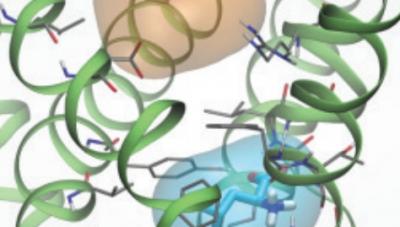Janus Juul Eriksen, a Ph.D. fellow at Aarhus University in Denmark, is a part of the research team developing the quantum chemistry code LSDalton, a massively parallel and linear-scaling program for the accurate determination of energies and other molecular properties of large molecular systems. The team needed higher performance for LSDalton to improve accuracy for simulating larger molecular systems for accelerating discoveries in materials and quantum chemistry. With insatiable need for compute cycles, the team sought access on one of world’s largest supercomputers, Oak Ridge National Laboratory’s Titan system, and was awarded allocation through the INCITE program.
“The application of quantum mechanics to molecular systems and phenomena has become an integral tool to all of chemical, biological, and general material sciences,” said Eriksen.
“Besides contributing qualitative information on molecules and their different interactions, modern quantum chemistry may also provide a deeper understanding of molecular processes, which cannot be derived from experimental work alone.”
As a result, there is a desire for accurate computer simulations on increasingly larger molecular systems, not only by academia, but also by various industrial research labs.
Challenge
The key challenges are two folds. First, the team wanted to enable LSDalton to scale with size of any molecular system, which grows dramatically whenever higher accuracy is desired while ensuring that code as a whole remains portable. “The code is bound to install and run as easily on a regular workstation or a modest Beowulf cluster, as it will on a modern supercomputer such as Titan. Adding any accelerated code to the source must not interfere with the compilation process when building on architectures where accelerators are absent.” said Eriksen. Second challenge was time. Eriksen’s Ph.D. studies in Denmark cannot last for longer than a maximum of three years. He had to be able to apply the program to molecular problems in organic chemistry or material sciences, as well as implement the given theoretical method. A chemist by trade, Eriksen has no formal education in computer science, so it was imperative the accelerated code should be relatively easy to write and maintain.
Solution
Eriksen and his team chose OpenACC as the platform for developing the code. OpenACC is a high-level approach for researchers and scientists who need to rapidly boost application performance for faster science while maintaining code portability on various systems. With OpenACC, the original source code is kept intact, making the implementation intuitively transparent and leaving most of the work to the compiler. “OpenACC was much easier to learn than OpenMP or MPI,” said Eriksen. “It makes GPU computing approachable for domain scientists. Our initial OpenACC implementation required only minor efforts, and more importantly, no modifications of our existing CPU implementation.”
Result
Using OpenACC resulted in up to 12x speedups compared to CPU-only code after modifying fewer than 100 lines of code with one week of programming effort. Additionally, with demonstrated success of the GPU-accelerated code on Titan, Eriksen’s project was selected to be one of 13 application code projects to join the Center for Accelerated Application Readiness (CAAR) program. This means they will be among the first applications to run on Summit, the new, pre-Exascale supercomputer expected to deliver more than five times the computational performance of the Titan supercomputer. Eriksen said the main advantage of OpenACC is that any accelerated code making use of the standard is based on original source code, regardless of whether the code is written in Fortran, C, or C++. This makes implementation intuitive and transparent, and easier to maintain and extend. “OpenACC enabled us to accelerate the code with minimal effort.”he said.
“Using OpenACC leaves most of the hard work to the compilers. Future developers are guaranteed their code will execute on future architectures, as well.”

